Spinach is a wonderful choice for a low-maintenance, high-yield crop to cultivate in your vegetable garden. This leafy green is not only easy to cultivate, but it is also extremely nutritious, including vitamins A, C, and K, as well as iron and fibre.
Growing your own spinach at home can save you money while also providing you with fresh, organic produce throughout the growing season. In this guide we’ll discuss some growing tips and techniques for spinach, from planting to harvesting, to help you maximize your production and enjoy a bountiful harvest of this tasty superfood.
A Brief History
Spinach has been a popular vegetable for centuries, with records of its cultivation dating back to ancient Persia. It was widely cultivated in China and Europe by the 1300s, and was brought to North America by the early settlers in the 1600s.
Breeding work with spinach began in earnest in the early part of the 20th century when breeders started selecting and hybridizing spinach varieties for their yield, flavor, color and disease resistance. Today, spinach is a widely cultivated crop in both home gardens and commercial farms.
While spinach is available throughout the year due to imports, it is considered to have its peak season from late spring through early summer. This is when fresh, locally grown spinach will be at its tastiest and most nutritious. Knowing how to grow your own spinach can ensure you have a steady supply of this leafy green vegetable from your own garden all season long.
Nutritional Benefits
Spinach is a powerhouse of vegetable packed with nutrients and vitamins.
One cup of raw spinach contains 27 calories, 0.86 grams of protein, 30 milligrams of calcium, 0.81 grams of fat, 2.2 milligrams of iron, 24 milligrams of magnesium and 167 milligrams of potassium. It’s also a great source of vitamin A and chlorophyll. Your body will love you for growing and eating spinach because it helps to boost your energy, improve your immune system and even fight cancer.
Unlike lettuce plants, however, spinach benefits from a bit of a nutritional boost as it matures. Look for organic fertilizers high in calcium and magnesium to help give your plants the nutrients they need to thrive and produce healthy leaves. Make sure you apply fertilizer evenly around the plants as this will ensure that all the leaves get the same level of nutrition. Keep an eye on your plants for signs that they are not getting enough nutrition such as yellowing leaves or stunted growth.
With careful planning and preparation, you can have a steady supply of spinach throughout the season that is both delicious and nutritious. Growing your own spinach is a great way to make sure you are getting all the vitamins and minerals you need in one tasty package.
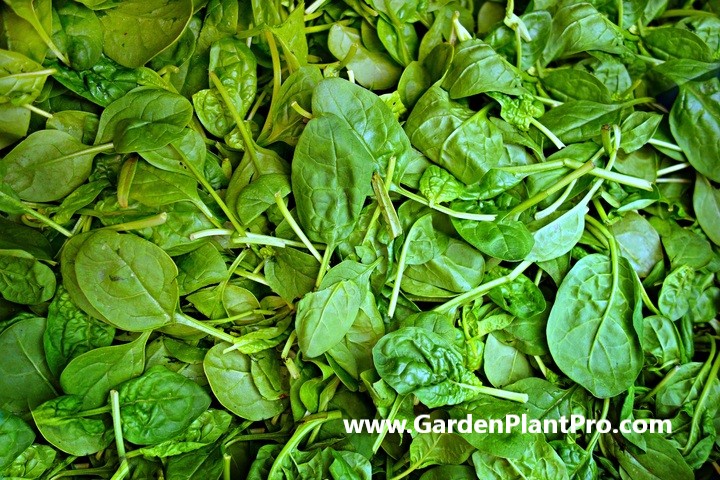
Common Varieties & Their Uses
When it comes to spinach, there are a few varieties that have become popular choices for growers and consumers alike. Perpetual, Popeye, Bloomsdale, Malabar, Red Stem and Baby Leaf are some of the most widely grown types. Each has its own unique characteristics and uses.
Perpetual spinach is a semi-erect variety with large leaves that can be used fresh or cooked. It is slow to bolt or go to seed making it a great choice for regular harvesting.
Popeye spinach is an erect variety with thick stems and large, dark green leaves. This variety is known for its resistance to bolting and its excellent flavor. It is suitable for both fresh eating and cooking.
Bloomsdale spinach is an heirloom variety with crinkly leaves in a deep blue-green shade. It has a mild flavor and is suitable for fresh or cooked use.
Malabar spinach is an annual climbing vine with bright green, arrow shaped leaves that can be used in salads or cooked dishes. It has a slightly nutty flavor and can tolerate heat better than other types of spinach.
Red Stem spinach is a semi-erect variety that produces dark green leaves with red stems and veins. The leaves have a sweet flavor that is great for both fresh eating and cooking.
Baby Leaf spinach is an upright type that produces small leaves that can be harvested as soon as they reach 1-2 inches tall. These tiny leaves have a sweet flavor and are great for salads or sandwiches.
No matter which variety you choose, growing spinach can be rewarding both nutritionally and aesthetically in the garden. Be sure to choose the right one for your needs and you’ll be enjoying delicious homegrown spinach in no time.
When To Sow
Early autumn / fall is the best time to sow or plant spinach because of the warm, moist soil. Spinach, like lettuce, thrives in milder autumn temperatures rather than the sweltering heat of summer.
The best time to sow is early in the morning or late in the day, so the plants aren’t exposed to the hot sun straight away. You can sow seeds direct, planting them in clumps of 2-3, creating a channel in the soil only 2cm deep, and sowing seed every 5cm.
Spinach is shallow-rooted making it ideal for pots; plant a punnet every two to three weeks. Don’t worry if you sow a few extra seeds; plants can be thinned after germination.
DIY PROJECT: Collect rainwater no matter where you live...
This DIY project is the best way to legally collect rainwater NO MATTER where you live. Get chlorine-free water, cut down on your water bills, and have enough for an emergency situation or to water your garden. Read More Here...
Before sowing seeds, make sure you prepare the soil with compost and liquid feed with worm wee or seaweed. When seedlings are about half a finger high, thin out the rows by lifting alternate plants and carefully transplanting these thinnings to a new row (no deeper than they were originally).
If you live in an area with really cold winters, there is still a way to grow spinach by using a cold frame. By covering the plants with straw or hay, you can protect them from freezing temperatures. This will still allow you to harvest your spinach earlier in the spring.
Choosing A Suitable Location In The Garden
Spinach prefers full sun during the cooler months, or part shade in warmer weather. It should be planted away from trees and buildings, as these can cast too much shade and block wind circulation.
When selecting an area in the garden for spinach, find a spot that is level, with good drainage and plenty of sun. Spinach requires 6 weeks of cool weather from seeding to harvest, so if you are growing spinach in warmer areas, look for an area that gets some relief from the hottest rays during the day. Prepare the soil by adding organic matter like compost or aged manure to ensure good nutrition for your plants.
Preparing The Soil
Preparing the soil is an essential step in growing spinach.
Before planting, loosen the soil at least 15 cm deep and mix in organic matter like compost or manure to enrich the soil. For best growth, the soil should be nitrogen-rich and moist. A week before planting, it is recommended to mix in compost and fertiliser. If you are using fertiliser, use one handful per square meter.
To ensure the soil is loose enough for the plants to form a deep taproot, you can use a garden fork to dig through the soil and break up any large clumps. This will also help improve drainage and aeration of the soil. After you have prepared the soil, it is ready for sowing or planting your spinach seeds or seedlings.
Planting The Seeds Or Seedlings
After choosing a suitable location and preparing the soil, it is time to plant the spinach seeds or seedlings. Direct sowing is recommended for the best results.
Seeds should be planted in clumps of 2-3, with a shallow drill 1.5 cm deep in well-prepared, fertile soil. If starting early, prepare a seed-starting mix indoors and plant the seeds at a depth of 1/2 inch. When transplanting seedlings, ensure that each plant is spaced about 10 cm apart.
Once the seeds or seedlings are in place, cover them gently with soil and water well to settle the ground around them. After planting, care must be taken to provide adequate moisture and nutrients to ensure healthy growth. Watering deeply and regularly and fertilizing according to specific requirements will ensure that your spinach plants are healthy and productive.
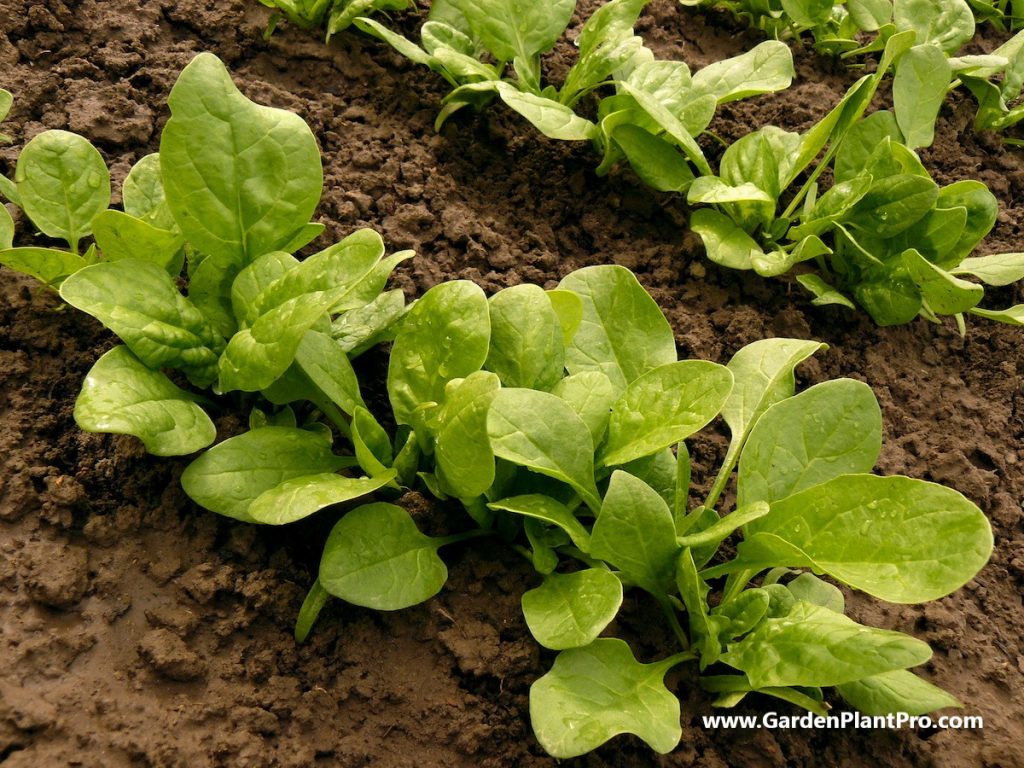
Caring For The Seedlings
Once the spinach seeds have been sown, it’s time to care for the seedlings. It is important to keep the seedlings well-watered and properly fertilized in order to ensure healthy growth. Watering should be done regularly, but not too heavily – it is best to water early in the morning or late at night. A balanced fertilizer can be applied every few weeks or as needed.
It can also be beneficial to thin out the seedlings once they reach a few inches in height. This will help to promote healthy growth and reduce competition between plants. The thinned seedlings can be transplanted or replanted elsewhere in the garden.
The soil should also be kept free of weeds and debris, as this will help to ensure maximum nutrition for the spinach seedlings. Mulch can be a great way to keep weeds down, but avoid mulching too heavily, as this can suffocate the plants.
Finally, it is important to keep an eye out for any pests or disease that might affect the spinach plants, and take appropriate action if necessary. Regularly inspecting the plants, removing any dead or diseased leaves, and properly disposing of them will help to keep the spinach healthy and productive.
Watering & Fertilizing
Watering and Fertilizing is an essential part of spinach cultivation. Spinach should be watered regularly to keep the soil moist, but not soggy. To ensure the spinach has a balanced nutrient supply, a balanced granular fertilizer should be mixed into the soil before planting. Once the plants are established, switch to a water-soluble fertilizer every two weeks or so.
If the spinach is in a pot, nitrogen fertilizer should also be added when repotting. Foliar fertilizer can also be added after potting to give the plants an extra boost.
To ensure optimal growth and yield of spinach, it is important to monitor soil moisture levels and fertilize accordingly. To do this, gardeners can use a moisture meter or finger test to gauge if the soil needs additional water or fertilizer. If water is needed, it should be applied in such a way that it does not wet the leaves of the plant. When applying fertilizer, it should be done according to the instructions on the label for best results.
Do you have some charcoal in your house right now? We call charcoal a “miracle leftover” for anyone who wants to be a little more self-sufficient and cut costs. That’s because it can help you with so many different things around the house and garden. You can even use it to make an energy-free fridge. Read More Here...
By following these steps for watering and fertilizing, gardeners can ensure their spinach plants have the best chance of thriving and producing a good yield of quality greens.
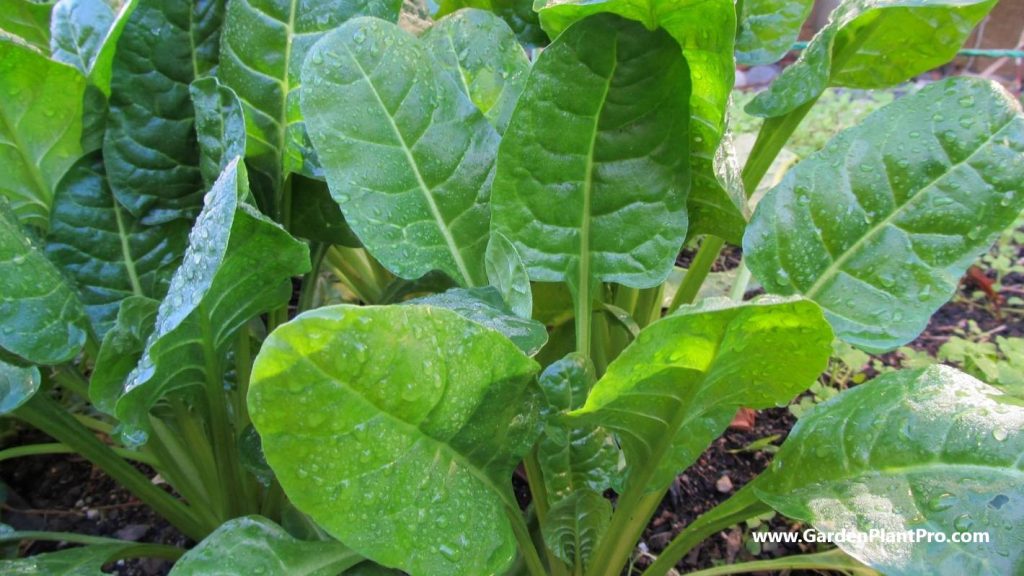
When & How To Harvest
When it comes to harvesting spinach, timing is key.
Spinach should be harvested in the morning or evening when the air temperature is cooler. Avoid harvesting in the hottest part of the day as this will stress the plants. Generally, baby spinach is ready to harvest when the leaves are about the size of a US quarter until they reach about the width of a golf ball. You can of course harvest bigger leaves when they are ready as required.
It’s important to harvest spinach regularly, as this will encourage further growth. If you neglect to harvest your spinach, it will flower and produce seeds, which will reduce its growth and yield.
When harvesting, cut leaves off at their base with a sharp knife or scissors and avoid pulling them off as this can damage the plant. Rather than harvesting the entire plant, you can harvest just the amount you need, leaving some on the plant, so the same plant continues to produce. This will give you fresh spinach leaves whenever you need them.
Once you have harvested your spinach, store it immediately in a cool place such as a refrigerator. Spinach will keep for several days if stored properly, but be sure to check it regularly for any signs of spoilage or wilting. Fresh spinach can also be frozen for up to two months if desired.
Storing & Preserving
Storing and preserving spinach is an essential part of ensuring you can make the most of your harvest. Fresh spinach can be kept in the fridge for up to two days, with an ideal storage temperature of 0 to 1 °C.
Frozen spinach is a great way to make sure you can use all of your harvest, as it has a much longer shelf life than fresh. To freeze spinach, wash and trim the leaves, blanch them and then pack them into freezer-safe bags or containers.
Common Diseases & How To Control Them
Spinach is troubled by several diseases, most of them fungal in nature.
Anthracnose
Anthracnose is one such fungus that affects spinach. It is characterized by the appearance of dark spots on the leaves, which can eventually spread and cause the leaves to turn yellow, wilt, and die.
To control this disease, it is important to practice good crop rotation, keep the garden clean and free from weeds, and avoid overhead watering. Additionally, using a fungicide such as copper sulfate can be effective when applied early in the season.
Downy Mildew
Downy mildew is another fungal disease that causes yellow patches on the leaves and can lead to plant death if left unchecked. To control downy mildew, it’s important to avoid overcrowding plants and water at the soil level. Also, avoid wetting the foliage as much as possible and use a fungicide such as sulfur or mancozeb to help reduce the spread of this disease.
Root Rot
Root rot is another common disease that can affect spinach plants. This disease is caused by overwatering and poor drainage in the soil. The symptoms include wilting and yellowing of leaves, stunted growth, and eventual plant death.
To prevent root rot from occurring, make sure to plant in well-draining soil and water only when necessary. Additionally, adding organic matter such as compost or manure can help improve drainage in heavy soils. If root rot does occur, take steps to improve drainage in your garden beds or containers and remove any affected plants immediately to prevent further spread of the disease.
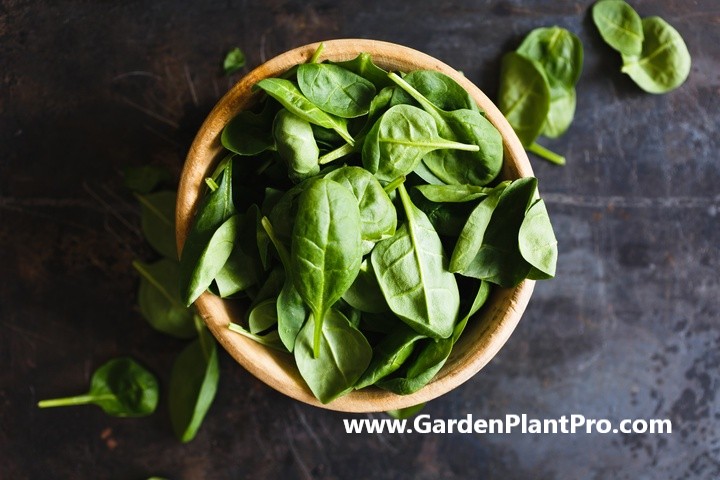
Common Pests & How To Control Them
Common pests can be a problem for spinach growers. The most common include aphids, mites, leaf miners and slugs. All of these pests can cause damage to the spinach leaves, making them unappealing to eat. Fortunately, there are a number of ways to control them.
Aphids
Aphids are small and often difficult to spot, but they can be identified by the large ragged holes, chew marks on leaf edges and silvery trails on leaves or ground. The best way to control aphids is by using reflective mulch or laying insect netting (floating row covers) from when the plants are babies. This will help to prevent them from becoming an issue later on. If aphids do become established, insecticidal soaps or horticultural oils can be used to control them.
Mites
Mites can also be a problem for spinach growers. These tiny insects feed on the plant’s sap, leaving behind telltale yellow spots on the leaves. To combat mites, spray your plants with a diluted solution of insecticidal soap every week or two until they disappear.
CASE STUDY: We've been living off the grid for the last 40 years...
In all that time an electric wire has never been connected to our house. We haven’t gotten or paid an electricity bill in over 40 years, but we have all the electricity we want. We grow everything we need, here, in our small backyard. We also have a small medicinal garden for tough times. Read More Here...
Leaf Miners
Leaf miners are small larvae that burrow through the leaves of spinach plants, leaving behind pale trails that look like webs. They can be controlled by spraying with an insecticidal soap or horticultural oil every two weeks until they’re gone.
Slugs & Snails
Finally, slugs can also damage spinach leaves by eating away at their edges and creating holes in them. To control slugs, lay out boards in your garden and inspect them regularly for signs of slug activity. You can then pick up any slugs you find and dispose of them away from your garden area. Additionally, you may want to consider using traps such as beer traps or copper tape around your garden beds as preventative control measures.
Beneficial Companion Plants
When growing spinach, it is important to consider the companion plants you will be planting alongside them. Companion planting has a number of benefits, including increased yields, pest and disease control, and soil fertility. The right combinations of plants can also give your spinach the best possible environment to thrive in.
Radishes are a great companion plant for spinach, as they help to deter leaf miners, aphids, and flea beetles. Beans, carrots, and peas are also suitable companions for radishes. Avoid planting spinach near fennel and potatoes as they can stunt the growth of your spinach plants.
Brassicas such as cabbage, kale, cauliflower, collard greens, eggplants, leeks, lettuce and brussels sprouts are all excellent companion plants for spinach. These vegetables have similar nutritional needs and can provide shade for your spinach in hot weather.
Kale is especially useful in this regard – its large leaves provide good sun protection for the tender leaves of your spinach plants. Kohlrabi is another beneficial companion plant for spinach as it helps to attract beneficial insects which can help to keep pests at bay.
Asparagus and strawberries are also good companions for spinach as they help to boost soil fertility with their root systems and nitrogen-fixing abilities. When planting these vegetables together it is important to remember that strawberries can be especially vulnerable to fungal diseases – so be sure to provide enough space between your strawberry and spinach plants so that air can circulate easily between them.
By selecting the right companion plants for your spinach you will be able to create a healthy garden ecosystem that will give your spinach the best possible chance of thriving.
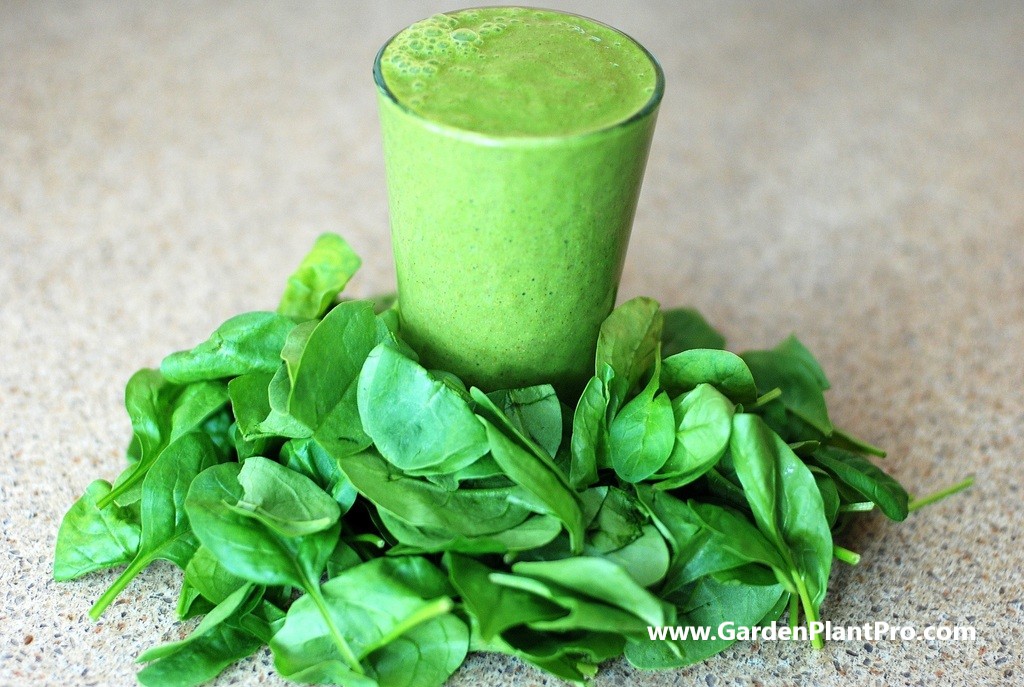
Using Your Home Grown Spinach
Once you’ve harvested your home grown spinach, there are plenty of ways to use it.
You can use it fresh or cook it with other vegetables. Spinach is delicious sautéed with garlic and olive oil or added to soups, stews, stir-fries, and salads. It can be blanched and frozen for later use or pureed into a soup or sauce. Spinach is also great as a base for pizzas and quiches.
To prepare fresh spinach for cooking, first rinse it well in cold water to remove any dirt or debris. Then pat the leaves dry with a paper towel before chopping them into smaller pieces for cooking. If you’re using frozen spinach, defrost it in the microwave before adding it to your dish.
When cooking with spinach, be sure not to overcook it as this will cause it to lose its flavor and nutritional benefits. For best results, sauté spinach quickly over high heat until just wilted. This will help retain its vibrant green color and make sure that the leaves aren’t soggy.
Spinach is also an excellent source of vitamins A and C, iron, manganese, potassium, magnesium, calcium, and other essential nutrients. Eating spinach regularly can help reduce the risk of certain diseases such as heart disease and cancer. It also makes a great addition to smoothies. So don’t be afraid to get creative in the kitchen with your home-grown spinach.




